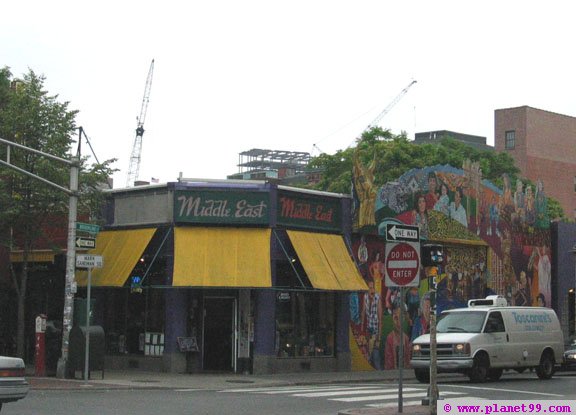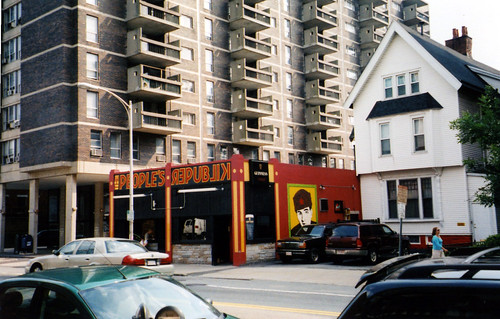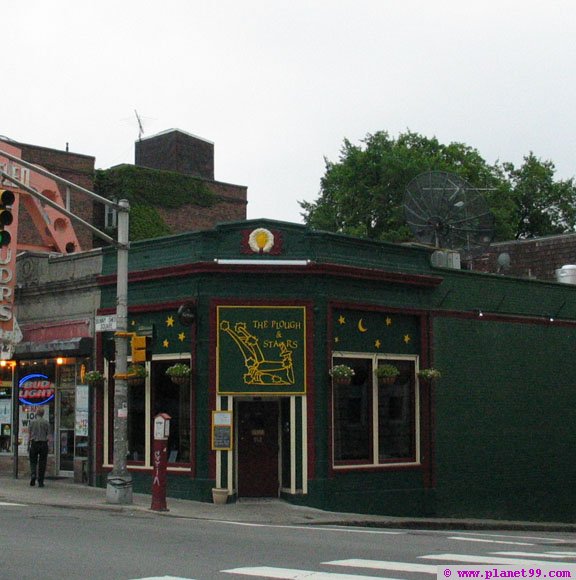ablarc, its great that you're thinking big and bold, but I wonder if you appreciate what already exists in Central Square, and what would be threatened by implementing all of what you propose.
Primarily, Central Square at its best is already one of the most livable, urban feeling, mixed-classed neighborhoods in the Boston area. The fact that things can be a little rough around the edges helps to give small businesses the flexibility they need to take chances and innovate. 3 live music venues at the Middle East, and another at TT the Bear's book a variety of innovative and up-and-coming new music. Middlesex and Phoenix Landing are consistent homes for quality DJ's. And it's probably no coincidence that Harmonix, the company behind the smash hit video game, Guitar Hero, is based in Central Square.
Sure, there is a Starbucks, a Dunkin Donuts, and an ABP, but Central also has the 1369, Mariposa, and Hot Off the Press. A McDonalds and a Wendy's, but also Central Kitchen and Rendezvous. Not to mention Mary Chungs, Pepper Sky Thai, Tibeten, a multitude of Indian, and the Falafel Palace.
Some points that I find particularly noteworthy, either for better or for worse:
3. They forbade more than two existing adjacent properties (of whatever size) to be developed by the same entity as part of a single project.
This had the effect of preserving Central Square's scale, which had nothing whatever to do with building height --something the elixirized former-nimbys readily perceived in their new-found intimacy with Truth.
Great idea.
5. They notified all owners of unlandmarked single-story buildings and existing parking lots that they had three years to submit redevelopment plans
or have their properties taken by eminent domain (with market-value compensation). You can imagine how quickly these fallow properties sprouted development.
I think the immediate ban on single-story buildings is unfair. They are quite prolific in Central, and I don't think the neighborhood would successful survive such upheaval. Plus, the "divey-ness" of some of these properties are part of the successful grittyness and edginess that allows for a thriving, non-homogenous scene.
7. They founded the Prospect Street Railway, a historic streetcar line to run up Prospect Street to Inman Square and down River Street,
across the bridge, to Brighton Center. Like the old, much-lamented Huntington Avenue line, this was to have no ROW separation, therefore it was not light rail. Power is from a winter-snowstorm-heated slot between the tracks, thus eliminating unsightly overhead wires. Visitors love it and residents ride it too. Inman Square is now on the tourist circuit with even more top-notch restaurants stretching along Prospect Street Railway between the two squares. Ridership is surprisingly high (must be because it's fun).
Great idea, although I think of Inman as a great "hidden secret" because it is relatively hidden. But, if you're running this line from Inman over to Brighton Center, might as well take it all the way into Union Square (possibly the next outpost of multi-class edginess if it had better transportation connections (green line extension).
8. They adjusted Central Square's zoning such that night-time entertainment uses were encouraged --including a two-block stretch for adult entertainment
parallel to Mass Ave on parking-lot-blighted Bishop Allen Drive. The good bishop's name provided the Square a droll disconnect of street name and function. Boston was glad to see combat zoning move across the river.
I know you love the idea of adult entertainment, but it just isn't appropriate here -- this directly abuts a residential zone ... and is the wrong kind of grit.
FAR bonuses are an enlightened zoning idea ... promotes good urban qualities within the context of existing rules and regulations that developers and zoning boards understand.
18. They bought the Post Office from the Feds and leased it to a developer who converted its splendid deco presence into a multi-story shopping mall.
Bustling commerce moved in right across from City Hall.
The P.O. is too small for a mall. Would make a nicer public library, though, than the concrete box buried back on Green St. & Pearl.
25. In a bold gift to walkers, they closed Western Ave. and River St. between Mass Ave and Franklin St., thus finally creating the Square in Central Square.
The big church became a focal point of the plaza, and slender towers sprang up on the fallow parcels on Green at Western Avenue and on Green between Western and River. The latter parcel welcomed the Arthur D. Little Building, Central Square's tallest.
Bah. There are no easy alternate routes and River/Western is a major thoroughfare eventually connecting to the River Drives and the Mass Pike. Already the prevention of left turns in this intersection creates extra traffic on minor roads. I think the placement of the Harvard T headhouse in the middle of the Harvard Square intersection was a bad idea there, too. This place is busy because it is a crossroads and a transit hub.
26. As a public service, the Parks Department built a recreational park for readers. It consisted of seven stories of low rent space for used bookstores. It sat on top of a reborn Orson Welles Cinema, also low rent, that tempts with seven silver screens: two for revival double features of classic movies, two for indie movies, two for foreign films and one for non-stop Bollywood.
7 stories? Even with the idea of a "recreational park" to give low rent space to used bookstores, its too much. And why do bookstores get preference? Why not a library that is actually free to all? What about music stores? Art? And why is your publicly supported movie house competing with the privately run Brattle and HFA in Harvard (and the Somerville theater in Davis, and the Coolidge in Coolidge Corner, and the Kendall cinemas in Kendall ... yes there is good support for film in Boston, but not THAT much)?
A final comment, if I had the city officials drinking Kool-Aid, I would make smaller tweaks in Central and Harvard, and spend the big bucks and grand changes in the no-man's land along Main St. and in towards Kendall Sqaure (no it is not too late to effect many of the same changes you suggest in Central in the Kendall area) ... starting with an infill T station at Main and Portland and including a complete recaptiulation of the public housing north of Main St. Even with expanded southern entrances to the Central T, it is still too far from MIT. A new T station here could connect to a transit line on the Grand Junction right of way ...






